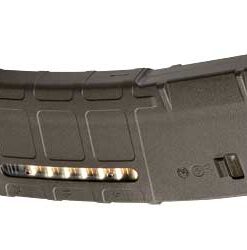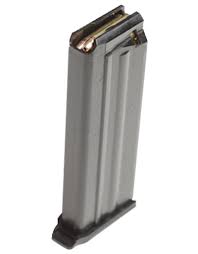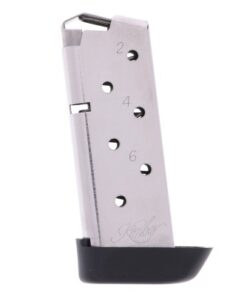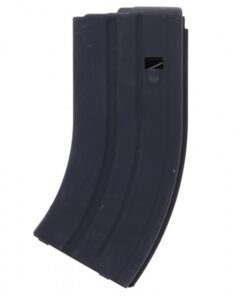30-Round M1 Carbine Magazine
$1,500.00
The Iconic 30-Round M1 Carbine Magazine: Specifications and Impact
30-Round M1 Carbine Magazine
Introduction
The M1 Carbine, a lightweight, semi-automatic rifle, played a significant role in World War II and beyond. One of its defining features was the detachable magazine, with the 30-round variant gaining particular prominence. In this article, we delve into the specifications of the 30-round M1 Carbine magazine and explore its impact on the battlefield.
Specifications
The 30-round M1 Carbine magazine was designed to significantly enhance the firepower and combat effectiveness of soldiers equipped with the M1 Carbine rifle. Here are some of its key specifications:
- Capacity: As the name suggests, the 30-round M1 Carbine magazine could hold up to 30 rounds of .30 Carbine ammunition. This was a substantial increase from the standard 15-round magazine.
- Material: The magazine body was typically made from stamped steel, which struck a balance between durability and weight. The use of steel ensured the magazine could withstand the rigors of combat.
- Weight: Despite the increased capacity, the 30-round magazine was relatively lightweight, which aligned with the M1 Carbine’s overall design philosophy of providing a compact and manageable weapon for troops.
- Design: The magazine featured a curved design that allowed for smoother and more reliable feeding of ammunition into the rifle’s chamber. The curvature also helped accommodate the additional rounds without excessively increasing the magazine’s size.
- Dimensions: The dimensions of the magazine were optimized to fit seamlessly within the M1 Carbine’s design. This ensured that soldiers could carry and operate the rifle with ease, even with the extended magazine attached.
- Reliability: While extended magazines in some firearms can be prone to jamming or misfeeding, the 30-round M1 Carbine magazine was engineered to maintain a high level of reliability. This was crucial in maintaining the rifle’s effectiveness in the field.
Impact on the Battlefield
The introduction of the 30-round M1 Carbine magazine had several notable effects on the battlefield:
- Increased Firepower: The most obvious advantage was the substantial increase in firepower. The 30-round magazine allowed soldiers to engage multiple targets or sustain fire for a longer duration without frequent reloads.
- Versatility: The extended magazine made the M1 Carbine a more versatile weapon, suitable for both close-quarters combat and medium-range engagements. This adaptability was particularly valuable in dynamic combat situations.
- Infantry Mobility: The lightweight nature of the M1 Carbine and its extended magazine allowed infantrymen to carry more ammunition without being burdened by excessive weight. This contributed to their overall mobility on the battlefield.
- Specialized Roles: The extended magazine was particularly favored by paratroopers, tank crews, and other specialized units where maneuverability and firepower were paramount. It provided these troops with a compact yet potent weapon for their unique situations.
- Post-War Influence: While the 30-round M1 Carbine magazine gained prominence during World War II, its influence extended beyond the conflict. It became a design inspiration for subsequent firearms with detachable magazines, influencing the development of later carbines and rifles.
Conclusion
The 30-round M1 Carbine magazine played a crucial role in enhancing the combat capabilities of soldiers wielding the M1 Carbine rifle. Its increased capacity and reliability provided a tangible advantage on the battlefield, influencing infantry tactics and contributing to the success of various military operations. Beyond its immediate impact, the magazine’s design and innovations left a lasting mark on firearm development. As we reflect on the history of military arms, the 30-round M1 Carbine magazine stands out as an iconic accessory that shaped the course of modern warfare.











